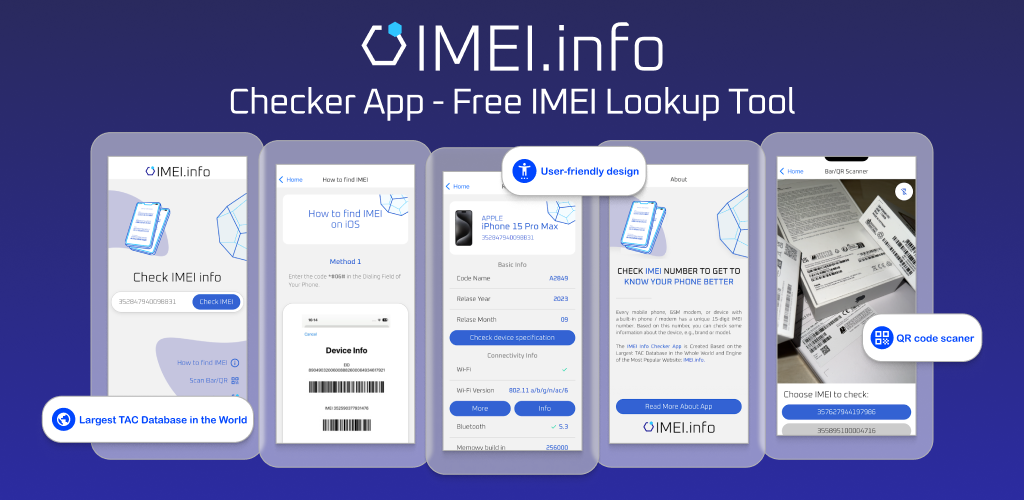Welcome to the world of Azure Cloud Migration Strategies and Guide. In this article, we will explore the essentials of cloud migration and provide insights into the crucial factors you need to consider during your migration journey. Cloud migration refers to the process of moving applications, data, and infrastructure from on-premises environments to the Microsoft Azure cloud platform. It offers numerous benefits such as scalability, cost-efficiency, and enhanced flexibility. However, successful migration requires careful planning and execution to mitigate potential challenges and maximize the benefits. So, fasten your seatbelts as we dive into the world of Azure cloud migration and uncover the key aspects you need to look out for.
Azure Cloud Migration Strategies and Guide
Microsoft Azure cloud platform provides a comprehensive range of more than 200 products and services, including analytics and IaaS (Infrastructure-as-a-Service) capabilities. It serves as a robust solution for businesses aiming to enhance their enterprise IT environments while maintaining strict compliance and safeguarding their data.
By leveraging Azure, organizations have the flexibility to enhance existing applications or completely transition from on-premise setups to the cloud, resulting in improved productivity, flexibility, and cost reduction.
When considering a migration to Azure, it's crucial to plan the process thoughtfully, taking into account options such as rehosting, refactoring, rearchitecting, or rebuilding your applications. Developing a well-defined Azure migration strategy can provide valuable insights into these choices. In this article, we explore the key migration models to help you navigate the cloud migration journey.
Azure migration strategies
When considering migrating to the Azure cloud, the strategies you choose will depend on your willingness to modernize your applications. Regarding your business needs and goals, the options to rehost, refactor, rearchitect, or rebuild your apps are available. Let's explore the first strategy:
1. Rehost or Lift and Shift strategy
Rehosting stands for migrating applications from an on-premise environment to the cloud without making any changes to the code or architecture design. This strategy is suitable for applications that require a quick transition to the cloud or for legacy software that plays a critical role in supporting key business operations. If you have limited time for modernization and plan to make significant changes after the migration, this approach may be suitable for you.
Pros:
- Fast migration process without the risk of introducing new bugs or issues.
Cons:
- Limited utilization of Azure cloud services due to compatibility constraints.
2. Refactor or Repackaging strategy
In the refactor strategy, the application undergoes slight changes to enhance its compatibility with cloud infrastructure. This approach is suitable if you wish to overcome maintenance challenges and leverage services like Azure SQL Managed Instance, Azure App Service, or Azure Kubernetes Service.
Pros:
- Faster and easier compared to a complete architecture redesign.
- Enables improved application performance in the cloud.
- Allows for leveraging advanced DevOps automation tools.
Cons:
- Less efficient than migrating to improved design patterns, such as transitioning from a monolithic architecture to micro services.
3. Rearchitect strategy
In some cases, legacy software may not be compatible with the Azure cloud environment. To address this, the application requires a complete redesign, embracing a cloud-native architecture. That typically involves migrating from a monolithic structure to micro services and transitioning relational and non-relational databases to managed cloud storage solutions.
Pros:
- Applications can fully harness the capabilities of Azure Cloud, offering high performance, scalability, and flexibility.
Cons:
- Migrating to a cloud-native architecture can be complex and present challenges, including potential issues in the early stages, such as breakdowns or service disruptions.
4. Rebuild strategy
The rebuilding strategy takes the transformation to the next level by deconstructing the old application and building a new one from scratch using Azure Platform as a Service (PaaS) services. This approach enables you to leverage cloud-native technologies like Azure Containers, Functions, and Logic Apps to develop the application layer, while Azure SQL Database serves as the data tier. By adopting a cloud-native approach, you gain the flexibility to utilize Azure's extensive catalog of products to optimize your application's performance.
Pros:
- Enables business innovation by leveraging cutting-edge technologies like AI, blockchain, and IoT.
- Provides the freedom to utilize Azure's comprehensive range of products and services to enhance application performance.
Cons:
- A fully cloud-native approach may have certain limitations in terms of features and functionality compared to custom-built applications.
Cloud Migration Process to Microsoft Azure
We would like to share our recommended approach for migrating applications and workloads to Azure, which aligns with Microsoft's guidelines. This approach outlines the key steps involved in the Azure Migration process.
1. Strategize and plan your migration process
The initial step is to engage with key business stakeholders and facilitate discussions to identify precise business outcomes expected from the migration.
Understanding the technical aspects of cloud adoption is crucial, and these factors should be incorporated into the migration strategy documentation.
Developing a strategic plan will help prioritize goals and objectives, providing a practical roadmap for cloud adoption. That includes determining which applications and workloads should be given higher priority for migration.
As you delve deeper into the business and technical elements, you can document them in a plan that forecasts, budgets, and implements your Azure migration strategy. To assist in this process, Azure's TCO (Total Cost of Ownership) calculator can be utilized to estimate expenses and savings associated with your migration project.
2. Evaluate workloads and prepare for migration
The next step is to assess your environment and categorize servers, virtual machines, and application dependencies. Several key components of your infrastructure require evaluation:
- Virtual Networks: Analyze your existing workloads to ensure performance, security, and stability align with equivalent resources in the Azure cloud. That ensures a consistent experience compared to an on-premise data center. Consider whether running your own DNS via Active Directory is necessary and determine which parts of your application require subnets.
- Storage Capacity: Select the appropriate Azure storage services to support the required number of operations per second for virtual machines with intensive I/O workloads. Prioritize storage usage based on data nature and user access frequency. Less frequently accessed data (cold data) can be stored in slower storage solutions.
- Computing Resources: Evaluate the benefits of migrating to flexible Azure Virtual Machines. Azure provides the advantage of not being limited by the capabilities of physical servers. You can dynamically scale your applications based on shifting performance requirements. Azure's Autoscale service enables automatic resource distribution based on metrics, preventing unnecessary expenses on redundant computing power.
To simplify the assessment process, Azure offers tools that streamline the migration journey:
- Azure Migrate: This comprehensive end-to-end tool is Microsoft's recommended solution. It facilitates the assessment and migration of servers, virtual machines, infrastructure, applications, and data to Azure. While it may initially seem overwhelming and involves data transfer to Azure servers, it provides extensive capabilities for a seamless migration experience.
- Microsoft Assessment and Planning (MAP) toolkit: This tool is a lighter alternative, suitable for those starting their cloud migration journey. It requires installation and stores data on-premise. However, it offers simplicity and provides a clear understanding of server compatibility with Azure, along with the required Azure VM sizes.
- Virtual Machine Readiness Assessment tool: This tool assists users through a series of questions, guiding them throughout the assessment process. It not only provides answers but also offers additional information relevant to each question. At the end of the assessment, it generates a helpful checklist for migrating to the cloud.
Create a migration landing zone: That involves preparing your Azure environment by establishing a collection of cloud services that will host, operate, and govern the workloads migrated to the cloud. Think of the landing zone as a blueprint for your future cloud setup, which you can further scale to meet your specific requirements.
3. Migrate your applications to Azure Cloud
To transition your applications to Azure, there are several approaches you can consider. You can begin by replacing certain applications with Software-as-a-Service (SaaS) offerings hosted on Azure. For example, you can migrate email and communication workloads to Office 365 (Microsoft 365), employ SharePoint for document management, and utilize Microsoft Teams for messaging, voice, and video communications.
When dealing with essential workloads that you can’t replace, experts recommend implementing an iterative approach. Azure provides hybrid cloud solutions, allowing a gradual and controlled transition without the need for an immediate shift. Consider some tips for a successful migration:
- Start with a proof of concept: Choose a few applications that are relatively easier to migrate. Test your migration plan, document your progress, and gather valuable insights. Apply these learnings when moving on to more complex workloads. Basic web apps and portals are often good candidates for the initial migration.
- Progress to more challenging workloads: Utilize the insights gained from the previous step to migrate workloads with a high business impact. These typically involve applications that handle crucial business transactions with high processing rates or workloads subject to strong regulations.
- Address the most difficult applications last: These applications are critical assets that support essential business operations. They are often challenging to replace or modernize, requiring a special approach or complete redesign and development. It is advisable to prioritize them after gaining experience with simpler and less critical workloads.
- Optimize performance in Azure cloud: That involves various activities, such as revising the application's design, fine-tuning the selected Azure services, configuring infrastructure settings, and managing subscription costs. Additionally, when you rehost your application and consider refactoring it to enhance cloud compatibility or completely rearchitecting it using Azure cloud services, further optimizations can be implemented.
Key optimizations to consider include:
- Monitoring resource usage and performance: Utilize tools like Azure Monitor and Azure Traffic Manager to monitor resource utilization and performance. That enables you to identify any issues and respond accordingly, ensuring optimal performance.
- Data protection: Implement measures such as disaster recovery, encryption, and regular data backups to safeguard your valuable data. By prioritizing data protection, you can mitigate potential risks and ensure business continuity.
- Maintaining high-security standards: Establish centralized security policies to maintain a strong security posture. Utilize antivirus and malware protection to minimize exposure to threats, and effectively respond to attacks using event management techniques.
In conclusion
Every migration process is distinct and demands a personalized approach. It's not a straightforward journey, and there are numerous intricacies and hurdles to overcome along the path to cloud adoption. Having an experienced migration partner can greatly simplify and expedite your Azure cloud migration journey. It is beneficial to select a team of experts in Azure migration services and modernization who have a proven track record and a portfolio of successful projects to showcase their expertise.

How to Ensure Your Mobile Device Retains Value for Resale
In today’s fast-paced tech world, keeping up with the latest mobile devices can be a costly affair. One way to mitigate these costs is by reselling your old device.

Discover the Power of Wondershare Filmora: The AI Video Editing Revolution
Filmora is changing video editing with its AI technology. This editor simplifies editing for everyone, from beginners to seasoned professionals. The latest release is the outstanding Wondershare Filmora V13 AI video editor. It has many innovative features.

Beyond IMEI: Exploring 5 Alternative Solutions For Consumer Phone Tracking
When our phones are our lives, losing or misplacing them can not only be a frustrating experience but one that brings our lives to a grinding halt. One method people often rely on when it comes to tracking down their phones is IMEI-based tracking, although it isn’t foolproof. It works, but it doesn’t always work great. This is why it is essential to have a backup plan in place.

Leveraging Technology for Staffing Solutions in Texas
In the ever-evolving landscape of the job market, Texas stands as a dynamic hub of economic activity. With its diverse industries ranging from technology and healthcare to energy and manufacturing, the state presents unique staffing challenges and opportunities.

How many eSIMs can be used in iPhone?
Are you looking to streamline your mobile experience with an eSIM for your iPhone? The advent of eSIM technology has revolutionized the way we connect, allowing for a more seamless and efficient use of our devices. With an eSIM iPhone, you can forget about the hassle of physical SIM cards and enjoy the benefits of multiple network plans on a single device. But how many eSIMs can an iPhone support? And how do you go about adding an eSIM to your iPhone? In this article, we'll dive into the ins and outs of eSIM capabilities on your SIM iPhone, providing you with a step-by-step guide to getting set up. Keep reading to unlock the full potential of your iPhone with eSIM technology and learn how to enhance your connectivity with ease.

eSIM Quick Transfer - All You Need to Know
In the ever-evolving landscape of smartphone technology, eSIM (embedded SIM) has emerged as a game-changer, offering greater flexibility and convenience for users. One of the latest innovations in this realm is the eSIM Quick Transfer feature, which streamlines the process of transferring eSIM profiles between devices. Whether you're an iPhone aficionado or an Android enthusiast, understanding the ins and outs of eSIM Quick Transfer is essential for maximizing the potential of your mobile experience.

IMEI Info Checker App
The awaited moment has arrived! After a period of anticipation, we take immense pride in announcing the launch of the IMEI Info Checker App, marking a pivotal moment in accessing concealed mobile device information. In today's digitally intertwined landscape, understanding your device's nuances is pivotal. This long-awaited unveiling undoubtedly simplifies access to concealed information about any mobile device. Soon available on the App Store for iOS and the Play Store for Android, this app promises a transformative shift in how users interact with their device data.

iPhone GSX Check
Are you seeking essential details about your iPhone's carrier network, warranty status, and other critical information? The iPhone GSX Check provides comprehensive insights into various aspects like simlock network, Find My iPhone status, warranty info, and more.



















